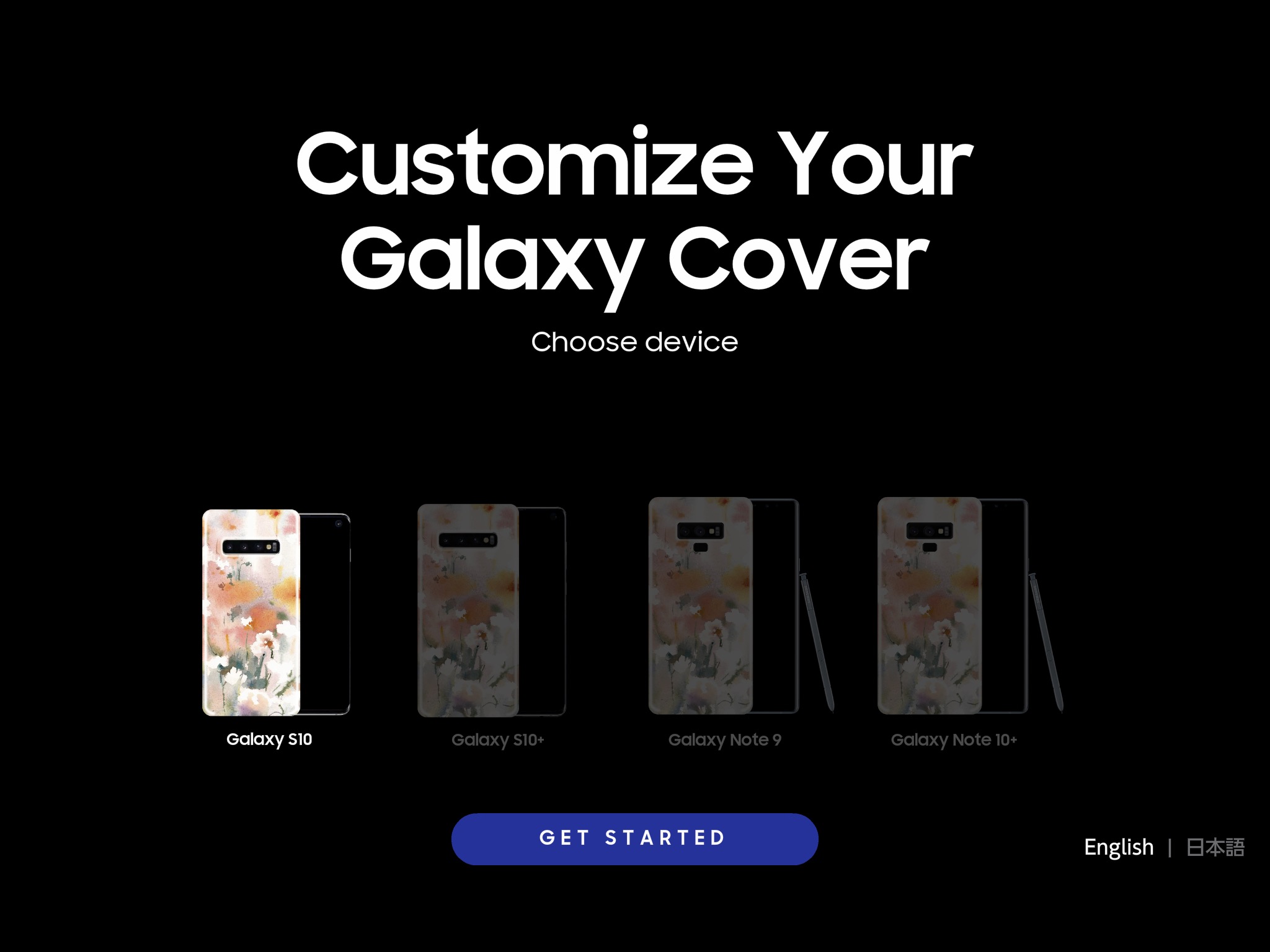Redefining Recycling for People at Home

As people become more aware of environmental issues, more individuals are seeking ways to contribute to sustainability. However, many face difficulties in handling and disposing of recyclables due to a lack of convenient services. CarbonLoop addresses this gap by offering a platform where users can schedule pickups for their recyclables, ensuring they are properly processed.
Role: I served as the founding product designer and acting product manager, where I de-risked product decisions by conducting user research, competitive analysis, and usability testing to validate design assumptions and prioritize features before development, leading to a more focused MVP and reduced rework.
Challenge: Make recycling more understandable and accessible to residents.
Outcome: A proof of concept that proved the need to close the gap between recycling intent and action — and that users will engage if the process is simplified, personalized, and community-driven.
Tools and Tasks: Adobe XD, Photoshop, user interviews, competitive research, technology research, prototyping and usability testing.
Duration: 18 months
Product Strategy and Vision
Our goal was not just to help people recycle more, but to close the gap between intent and action by reducing barriers like time, confusion, and motivation. Through CarbonLoop, we positioned the product to meet both individual and environmental needs by combining convenience, education, and small-scale community impact.
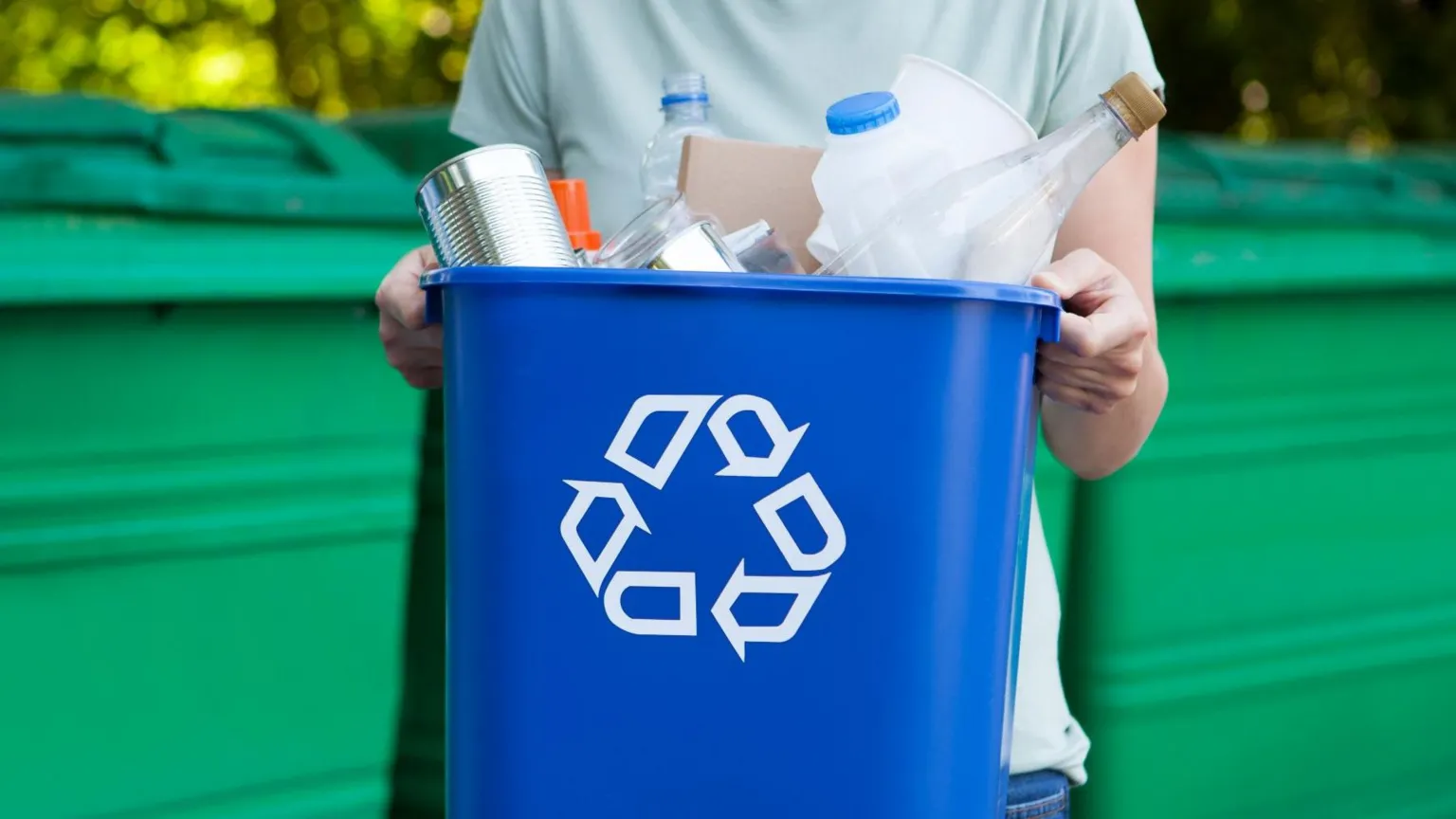
Market Fit
CarbonLoop sits at the intersection of green tech, logistics, and civic engagement. Unlike curbside recycling services that rely on inflexible municipal systems, CarbonLoop is designed to be lightweight, hyperlocal, and scalable. Our unique value proposition lies in three areas.
Feature 1
Guided Recycling
Users get real-time feedback on what they can and can’t recycle, reducing contamination and increasing confidence
Feature 2
On-Demand Pickups
Flexible scheduling enables users to recycle on their terms, especially in underserved areas without convenient drop-offs.
Feature 3
Impact Transparency
We show users the cumulative impact of their efforts — both individually and collectively — to reinforce behavior and build long-term engagement.
Problem – Recycling in the U.S. Is Confusing, Inconvenient, and Ineffective

Recycling in the U.S. is way more confusing than it needs to be. The rules change depending on where you live, so a lot of people just guess — and sometimes get it wrong. There’s no nationwide system, so it’s up to each person to figure it out on their own. Add in the hassle of sorting, messy drop-off centers, and not much reward for doing it right, and it’s easy to see why people give up. Even folks who really want to help the planet can end up frustrated by a system that doesn’t make it easy.
Our initial target users are eco-conscious individuals, deeply concerned about the environment and are eager to adopt sustainable practices to help protect the planet, but shifted when we realized the major detractor was inconsistency in standards and education.
Our goal then became to spread information about recycling and make it more accessible to those who want to contribute to the efforts of creating a healthier environment.
We wanted to find out if providing the resources necessary to effectively recycle from home would encourage and those who want to reduce their carbon footprint to be more active.
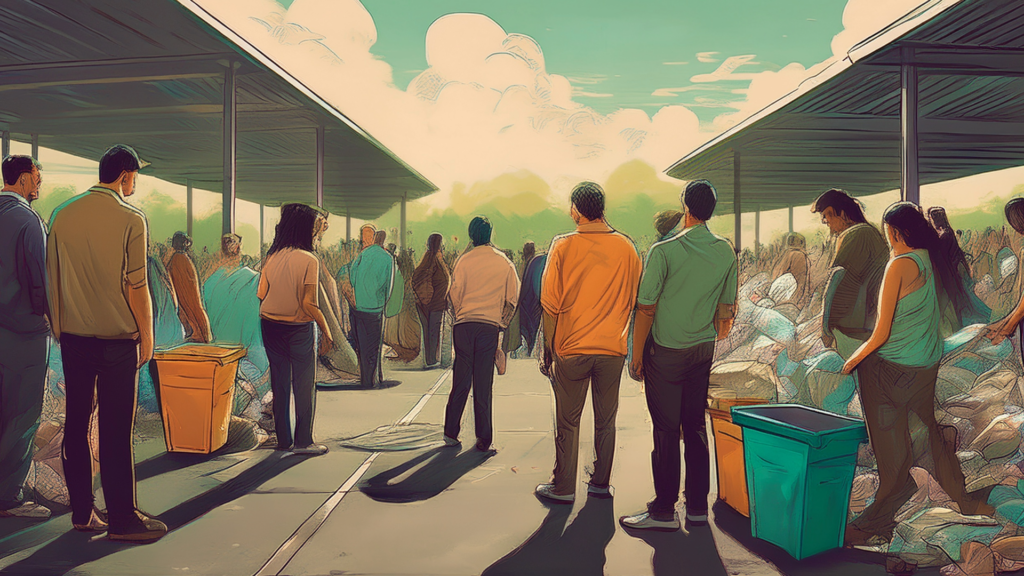
Research and Discovery – Rummaging for information
- Contextual Inquiries – We visited sites such as local recycling centers, peoples kitchens and their backyards to observe their behaviors and hear what they had to say about their process.
- User Interviews – We interviewed 30 people on and off-site about what motivated them to recycle and learned about their biggest pain points in their efforts.
- Competitive Research – We researched other ways our users were recycling and how our competitors were addressing these pain points.
User Research
To better understand our customers and their behaviors and attitudes around recycling, we explored the topic and came up with several questions that we used to guide our research. Here are some of the topics we wanted to explore.
Our main objective was to learn about their habits and preferences at home with secondary objective to understand their experience with competitors, like recycling centers.
Recycling at Home – understand what motived them and how they were processing their recyclables at home already. In addition, we wanted to listen for any frustration they had with this process, looking for opportunities to improve this experience for them.
Recycling at a Center – learn about our main competitors, the recycling center, so we really wanted to hone in on people’s attitudes about their visits and listen to how they describe their experience.
Attitudes & Perceptions – uncover how people feel about their recycling experiences, which could give us context to their decisions.
Comparison & Reflection – overall satisfaction about their experiences, what they liked/disliked.
After screening for people who had a varied level of experience recycling, we asked them these questions:
Recycling at Home
- Can you walk me through how you currently recycle at home?
- What materials do you usually recycle at home?
Are there any you’re unsure about? - How do you decide what goes in the recycling bin?
- Do you feel confident that your recycling at home is being handled correctly?
Why or why not? - Are there any challenges or frustrations with recycling from home?
Recycling at a Center
- Have you ever taken recyclables to a recycling center?
If yes, what was that experience like? - What motivates you to make the trip to a center instead of relying only on curbside pickup?
- What do you usually bring, and how do you prepare it before going?
- Are there any barriers that make it difficult to visit a recycling center?
- Have you ever chosen not to go because of something (time, weather, space, staff, etc.)?
Attitudes & Perceptions
- How important is recycling to you personally? Why?
- Do you feel like your recycling habits make a difference?
- What does “doing it right” look like when it comes to recycling in your view?
- What would make you feel more motivated or supported in your recycling efforts?
- Have your habits or feelings about recycling changed over time?
Comparison & Reflection
- Which do you prefer — recycling from home or going to a center? Why?
- What do you think works well in each situation? What doesn’t?
- If you could design your ideal recycling system, what would it look like?
Competitive Research
Some of the insights we gathered from talking to people helped us look at our competitors more closely. We spent a few afternoons visiting local recycling facilities to observe the general attitudes of people interacting. In the efforts to really immerse ourselves in the experience to empathize with our customers, we even brought some of our own recyclables to process and waited in the lines with others. Here, we took note of their behaviors, observed any operational bottlenecks and assess overall customer satisfaction.
Patrons typically arrived with carloads of plastic PET (polyethylene terephthalate) bottles and aluminum cans. We learned that, although recycling glass bottles was the most financially rewarding, it posed significant challenges in transportation for return. Glass also posed significant dangers as they could break in the process and cause injury, so many people opted not to recycle them this way.


We collected some quantitative data, such as:
Amount/type of product moving – how much recyclables were being moved throughout peak hours.
Time spent at visit – how much of a time commitment recycling was.
Exchange rate – how much was their efforts worth in monetary exchange.
We asked a few select patrons about their understanding of the process of recycling as they waited in line. Though, most had a good concept of recycling and spoke generally about the benefits it had toward the planet, some had more questions than answers.
Some of them asked:
- “Where does it actually go?”
- “What happens from here?”
- “How has my contribution affected the world around me?”

Synthesis and Definition – Sorting through our research
- Primary Pain Points and Goals- What obstacles are getting in the way of our users?
- Personas – Building empathy for those who need us.
- Problem Statement – Defining the problem.
- Objectives and Opportunities – How might we resolve these problems?
Many people want to recycle, but the system makes it harder than it should be. Confusing rules that change by location, lack of clear guidance, and limited access to curbside pickup leave users guessing what’s actually recyclable. Drop-off centers can be inconvenient, messy, or hard to reach, and there’s often little reward or feedback for doing it right. All of this adds up to a frustrating experience that discourages even the most well-intentioned recyclers.
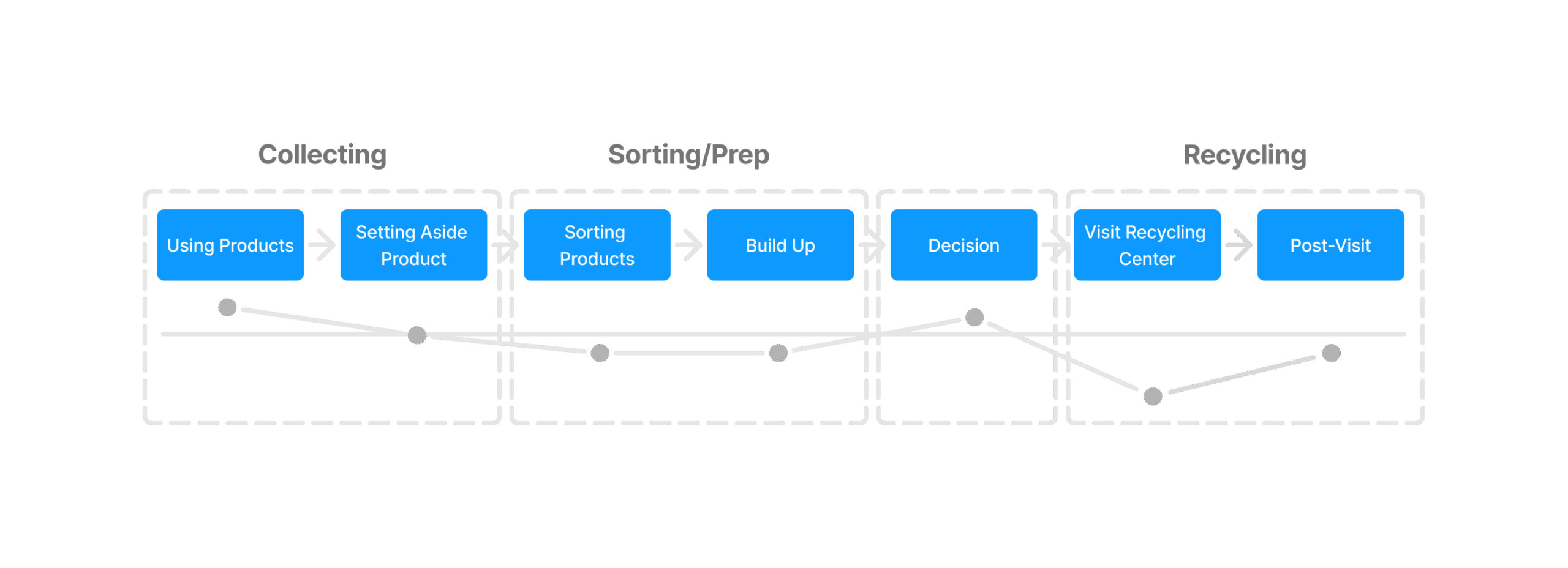
Using/Consuming Products
- Thought: “Okay, I’m done with this.”
- Emotion: Positive/Neutral
- Pain point: Not always clear if it’s recyclable
Item is set aside (or not)
- Thought: “I’ll save this for recycling later.”
- Behavior: Tossed in a bag, bin, or forgotten
- Pain point: No space / not sure it’s worth the effort
Sorting at home
- Thought: “Should I rinse this? Where does it go?”
- Emotion: Confused, sometimes annoyed
- Pain point: Unclear rules, lack of bins, messiness
Storage builds up
- Thought: “I’ll wait until I have enough to make the trip worth it.”
- Emotion: Indifferent → guilt → procrastination
- Pain point: Takes space, smells, looks cluttered
Decision to recycle
- Thought: “Ugh, I guess I should finally go drop these off.”
- Emotion: Dread or frustration
- Pain point: Time-consuming, messy, weather, crowds
Trip to recycling center
- Thought: “Let’s get this over with.”
- Emotion: Overwhelmed or discouraged
- Pain point: Rude staff, unclear instructions, unsanitary, minimal reward
Post-Visit
- Pain point: No feedback or confirmation if recycling was done rightPain Points
- Thought: “At least I did my part… I think?”
- Emotion: Mild relief, lingering doubt
Goals
Most users share a common goal: they want to do the right thing and reduce their impact on the planet. They care about recycling, even if they don’t fully understand all the rules, and many admit to “wishful recycling” — tossing items into the bin and hoping they’re recyclable. Deep down, they want to feel confident that their efforts are making a difference, and they’re looking for clearer guidance, easier systems, and more meaningful ways to contribute to a healthier environment.
Personas
The people we designed for genuinely care about the environment and want to do their part—but recycling isn’t always as simple as tossing something into the right bin. Many of our users were motivated by the idea of helping the planet, yet they faced a range of obstacles that made recycling feel inconvenient, confusing, or just not worth the effort. These barriers went beyond just “not knowing how” — they included things like not having enough time, not enough space at home to sort items, or having to deal with less-than-pleasant conditions at local recycling centers.
We focused on these users because they care, but the system isn’t always working for them.
Primary Users: The Uninformed

Jordan, 28, Rideshare Driver
- Lives in urban apartment of a modern-income neighborhood.
- Cares about the planet in theory, but doesn’t connect personal actions to global impact.
- Limited knowledge of recycling — unsure what can be recycled, when to do it, or where to take it
“Honestly, I want to recycle, but half the time I’m not even sure what goes where. Like, can pizza boxes be recycled? I’ve heard yes and no. And I don’t have time to Google every little thing. The bins at my building are confusing, and if I mess it up, what’s the point? Sometimes I just throw it all in the trash because it feels like a hassle.”
Jordan typically throws most waste into a single bin but keeps plastic bottles and cans in a separate bag. He plans to take them to a recycling center once he has enough to make the trip feel worthwhile. In interviews, ‘worth’ was often tied to the cash return value (CRV) of those items. Our research also showed that most users like Jordan don’t sort other recyclables—mainly due to confusion about what’s recyclable and a lack of perceived benefit.
Secondary Users: The Already Active
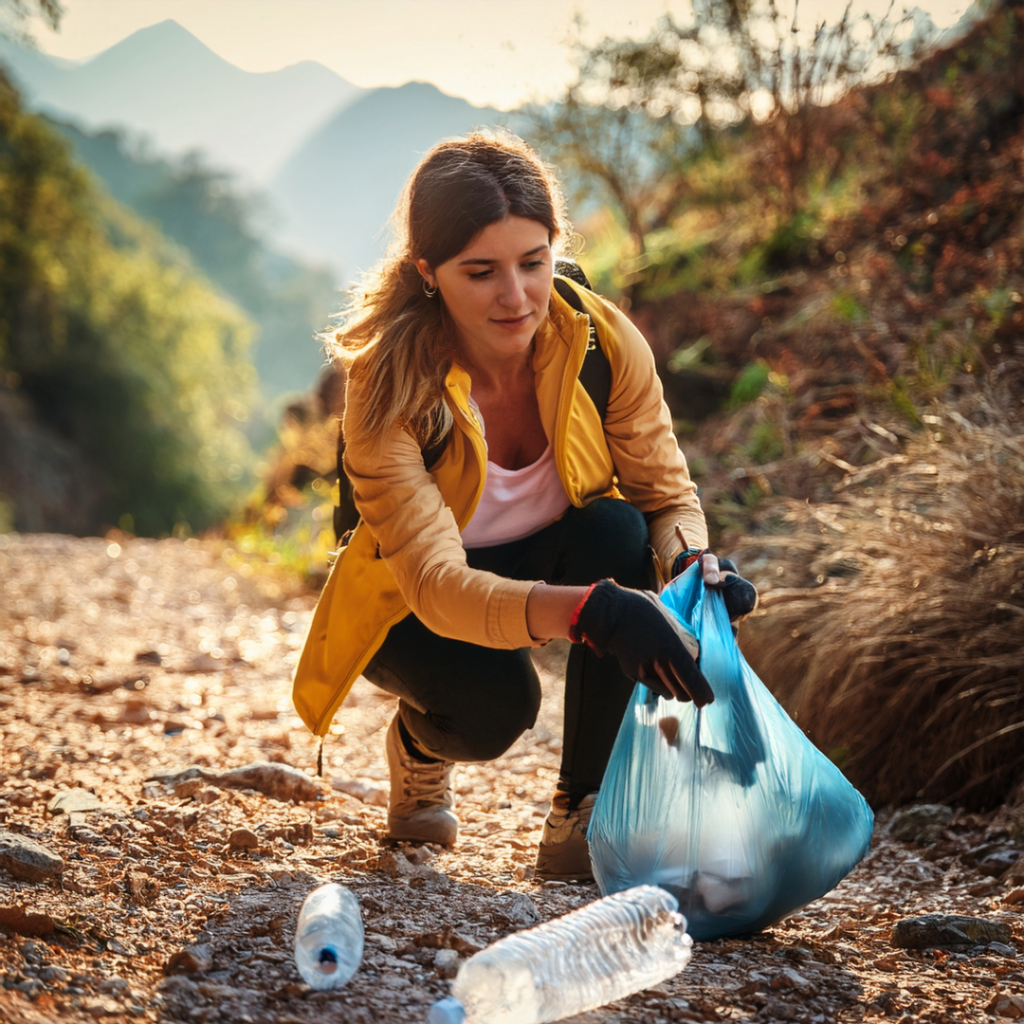
Maya, 34, Middle-school Science Teacher
- Lives in a suburban neighborhood with access to municiple curbside recycling.
- Is deeply committed to sustainability; believes individual actions ripple outward
- Meticulously separates recyclables
and participates in composting and textile recycling
“I do everything I can at home, but sometimes it feels like I’m just one drop in the ocean. I’d love to find ways to connect with others in my area who care about this stuff too, to share ideas on how to reduce waste creatively.”
We also have users like Maya, who are already doing the most to keep their community clean and healthy, but is looking for more opportunities, not just for herself but for others to contribute meaningfully.

Market Strategy – How We’ll Trash Our Competition
- Who we’re targeting — those who are looking for more convenient alternatives.
- How we’ll reach them — community groups such as schools, partnerships with eco-conscious brands.
- Value of our product — making the efforts easier and collaborative.
We identified the biggest competitor in this market was municipal services that collect recyclables directly from households. These are usually subscribed services attached to services required by the city in order to occupy a home.
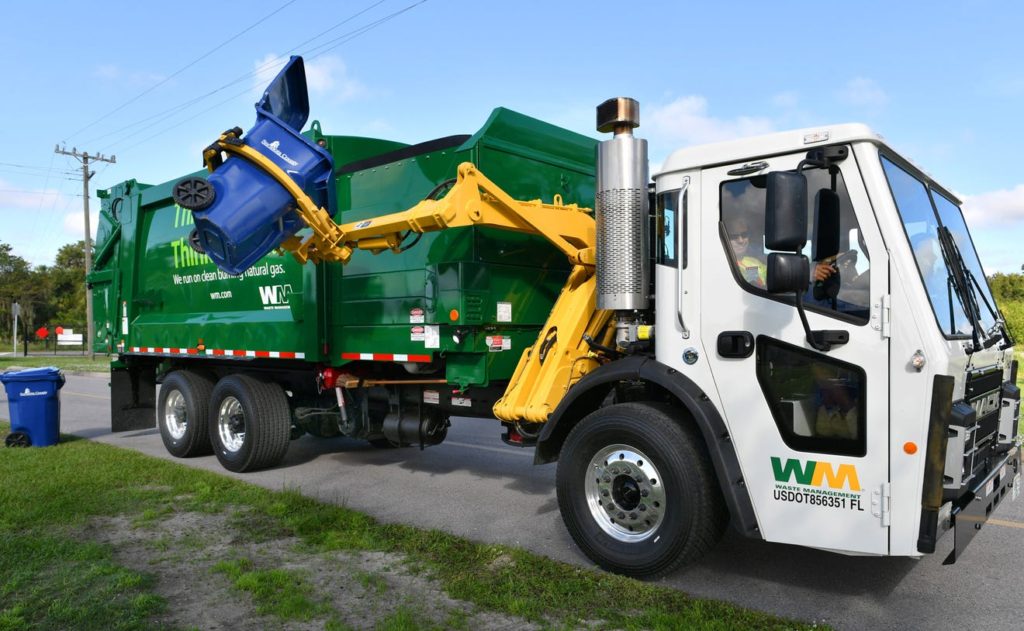
This came up a lot in our interviews because it’s the default method of recycling for most home owners. They chose this method because they were already paying for it as part of their cost of living in their homes. But varying standards and little enforcement of properly separating materials cause low-quality goods that eventually get processed the same as garbage, never making it through the recycling process.
The biggest competitive advantage we would have over the municipal services, was transparency and education. While most municipal services claim they take care of the recyclables in a responsible manner, it’s often combined with regular waste if the recyclables have been contaminated.

This was because of the often confusing or contradicting instructions provided by the services. There is a huge degree in what is acceptable to put into the common blue recycling bin and what needs to be discarded as regular waste. And it’s often not so clear.
This confusion is the leading cause to why the quality of recyclables have been compromised, leading to other global economic issues.
Objectives and Opportunities
Through user interviews and field observations, we discovered that people who are committed to recycling often face frustrating barriers that prevent them from following through on their good intentions. Despite wanting to make a positive impact, many encounter confusion, limited access, and a lack of clear feedback from the current system.
These challenges not only discourage continued effort but also reveal where the system could do more to support people who care. Based on these findings, the following opportunities highlight areas where improvements could make recycling more accessible, rewarding, and effective for dedicated users.
Provide Standardize and Simplify Recycling Information
Create clear, localized guidance and digital tools that help users understand exactly what can be recycled to reduce confusion from inconsistent rules.
Support Better Sorting and Reduce Contamination
Introduce smarter methods of sorting, visual demonstrations, or user education that helps minimize wishful recycling and promotes clean, proper sorting.
Increase Transparency and Trust in the System
Provide visibility into where recyclables go, how they’re processed, and the impact of individual efforts, helping users feel that their actions truly matter.
Foster Community Engagement and Collective Action
Build features that allow users to connect with neighbors, local organizations such as schools, participate in challenges, share tips, or start local initiatives to make recycling a more social and rewarding experience.
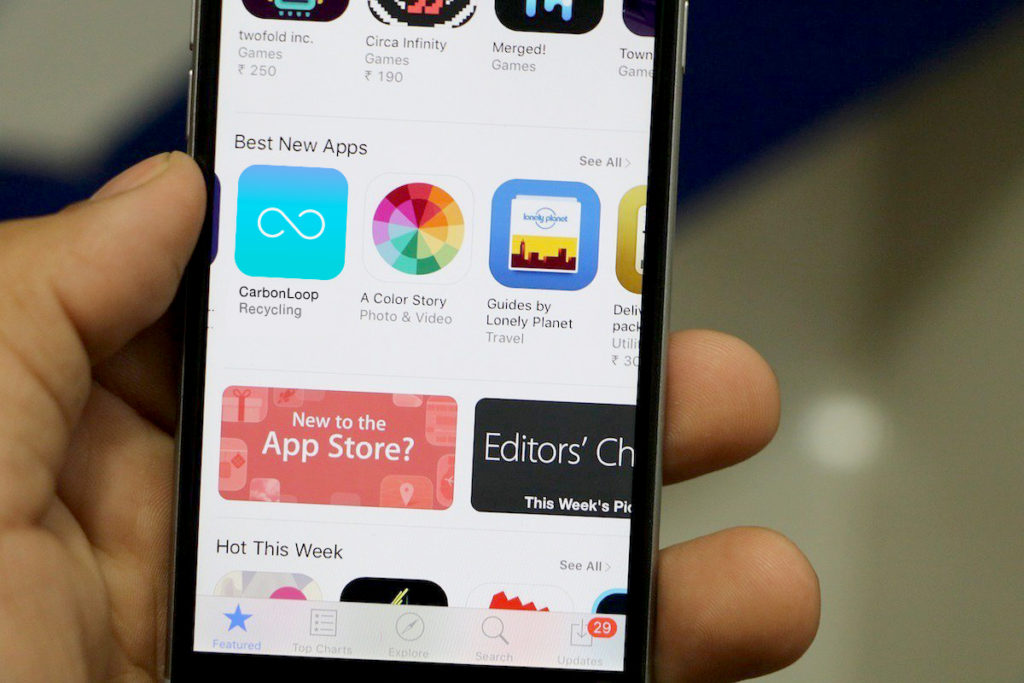
Building an MVP
Equipped with a better understanding of what users were most frustrated with and some ideas, we built a mid-fi prototype that we published on Apple’s TestFlight so that we can beta test and observe our users. We focused on:
- Onboarding – promoting aspects of our product to educate them on how to use it.
- Signup – collecting necessary information about the user.
- Scheduling – creating the process we can use to test and observe.
Recycling no longer a waste of time…
As many ways there are to preserve our planet’s health, it may be difficult to understand how effective our efforts are.
People are left to accept that their efforts can only take the so far and its soon out of their control after a certain point.
So we came up with some solutions to help them not only help them in their efforts of recycling, but reward them with education and incentives as well.
- Learning – They could read about how to more effectively recycle or about alternative ways they can help preserve their community and planet.
- Assured – They could be assured that their efforts are making an impact by seeing how their efforts are calculated into measurable actions and diverting waste from landfills.
- Incentives – They can exchange their credits gift cards and other eco-friendly goods.
- Scheduled pickups – Users can arrange their recyclables to be picked up and exchanged for CRV where eligible.
- Tracking – They can stay updated on their redemptions and transactions.
Onboarding
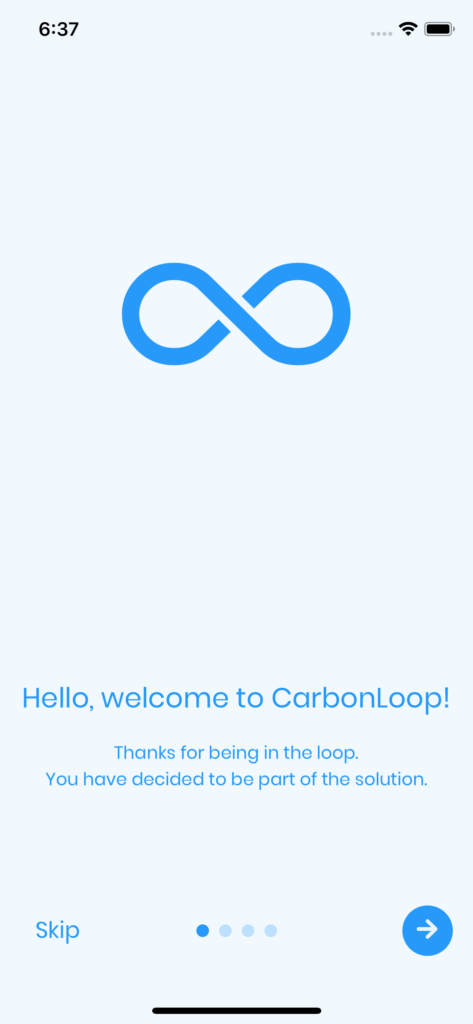
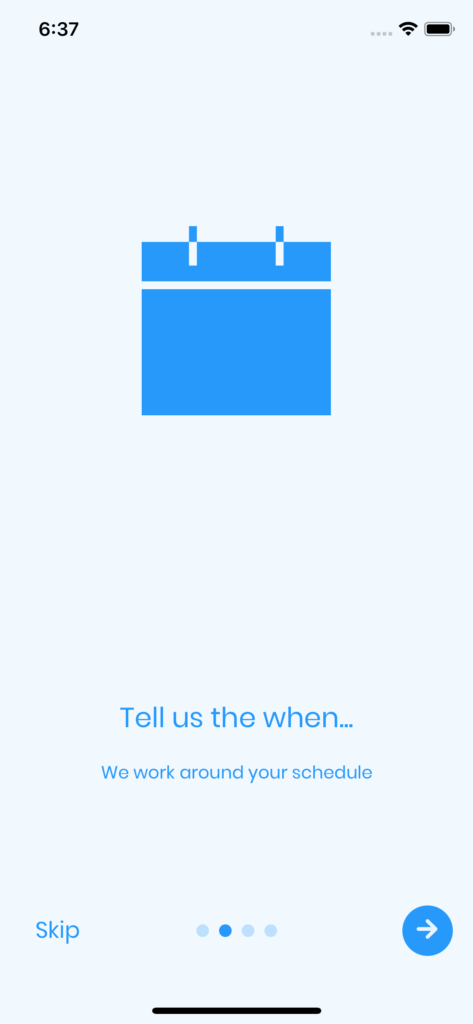
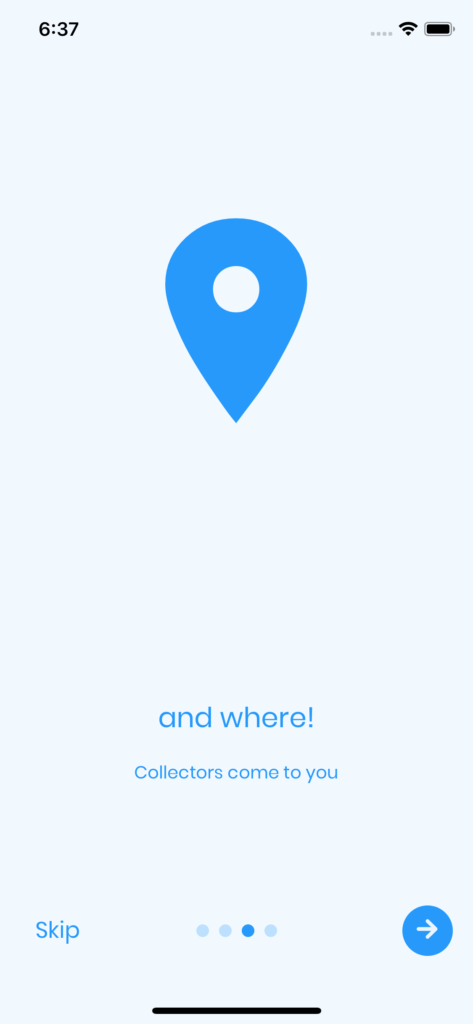

We wanted to introduce users to the app and show how they’d benefit from using it. Our onboarding concept was designed to motivate them to reduce their carbon footprint and contribute to environmental conservation efforts and develop a habit.
The message we wanted to get across to them is that it’s easy and rewarding.
Signing Up
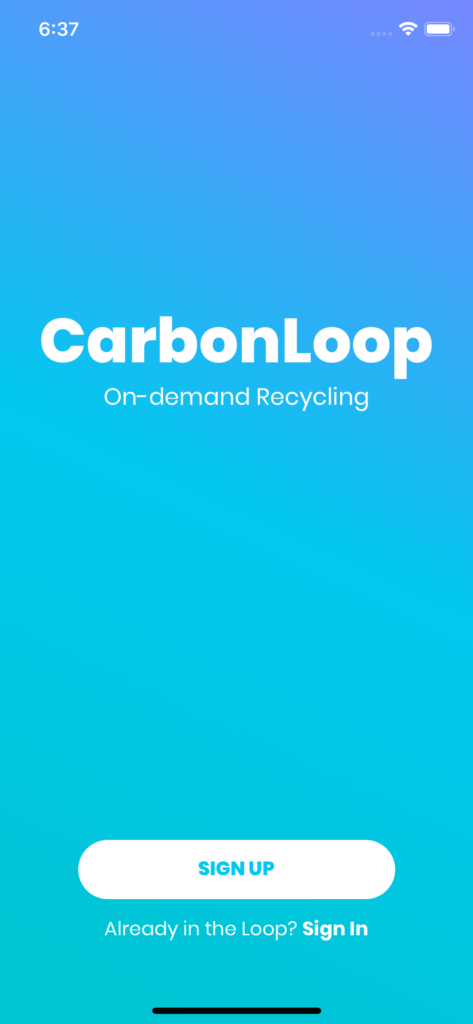
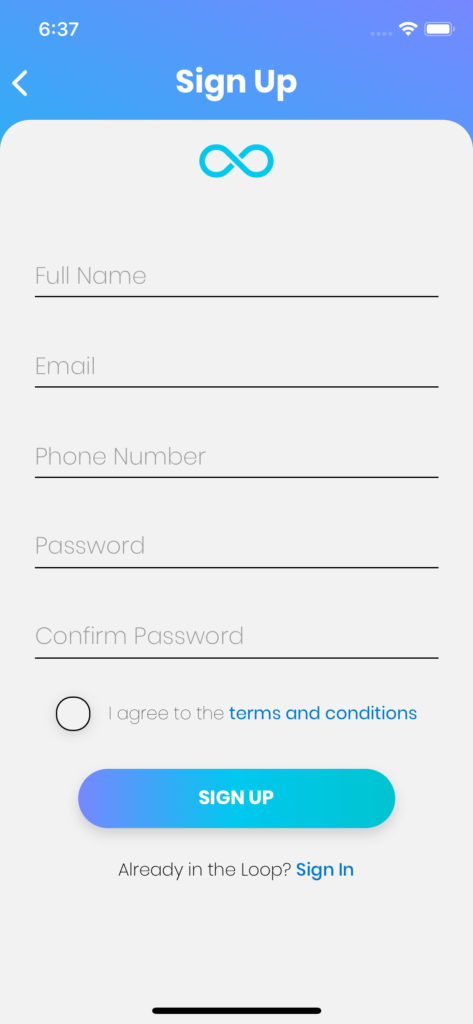
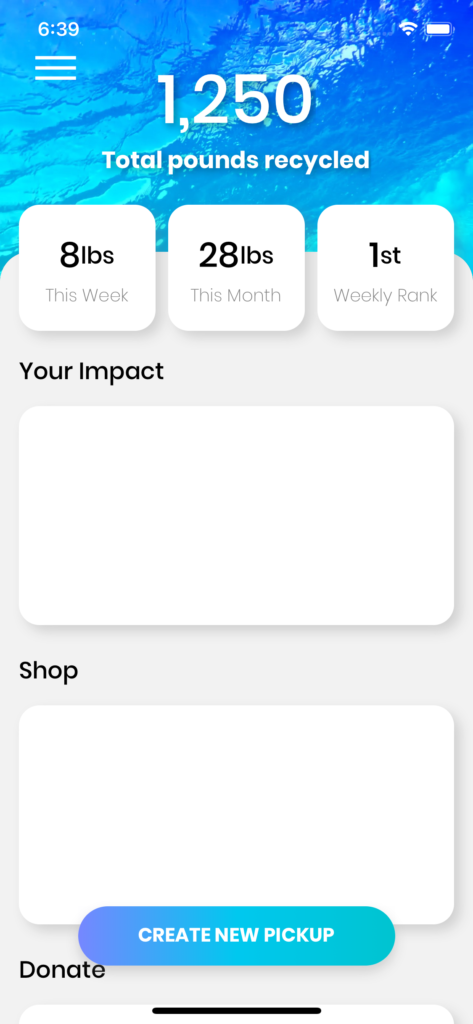
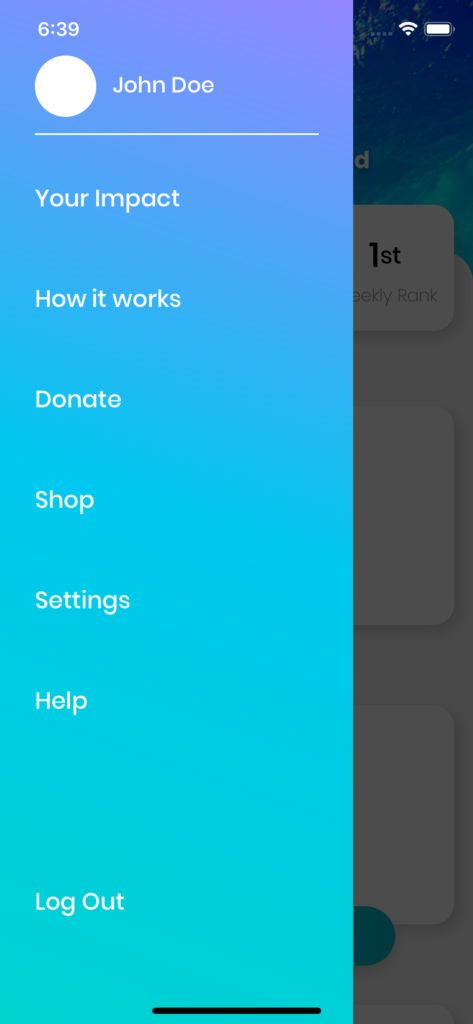
After users go through the introduction, they’ll be prompted to set up their account. We wanted to make the app quick to access and browse before giving them more instruction to minimize drop-off. Users would be able to access information with minimal friction. This effort was to improve adherence, allowing them to be able to still tour the app and access other features such as news articles.
Scheduling Pickups
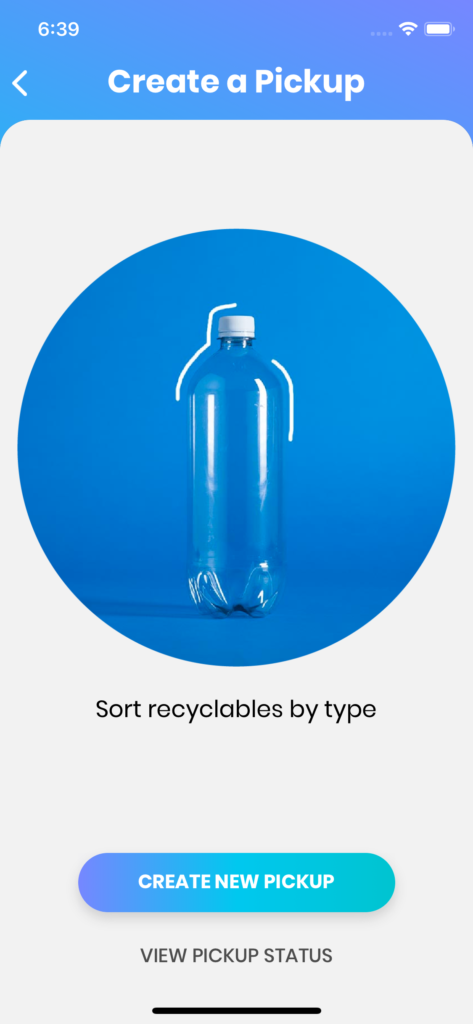


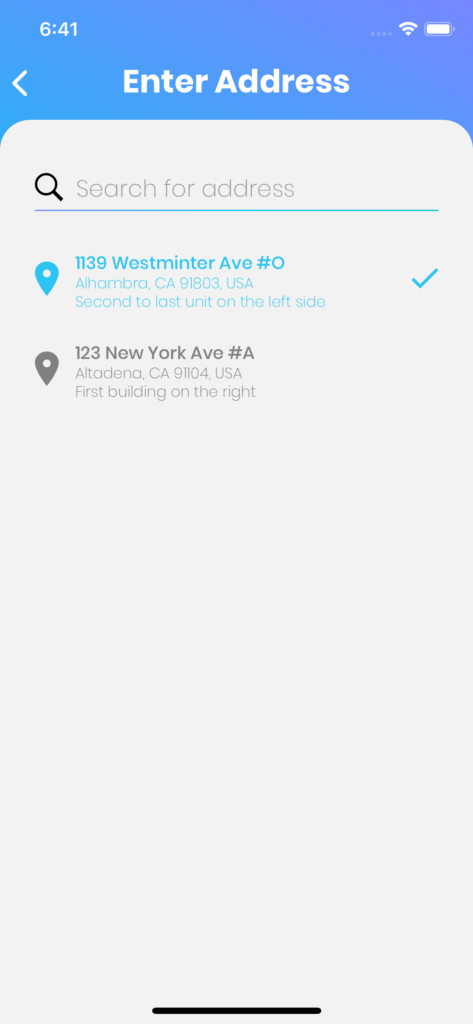
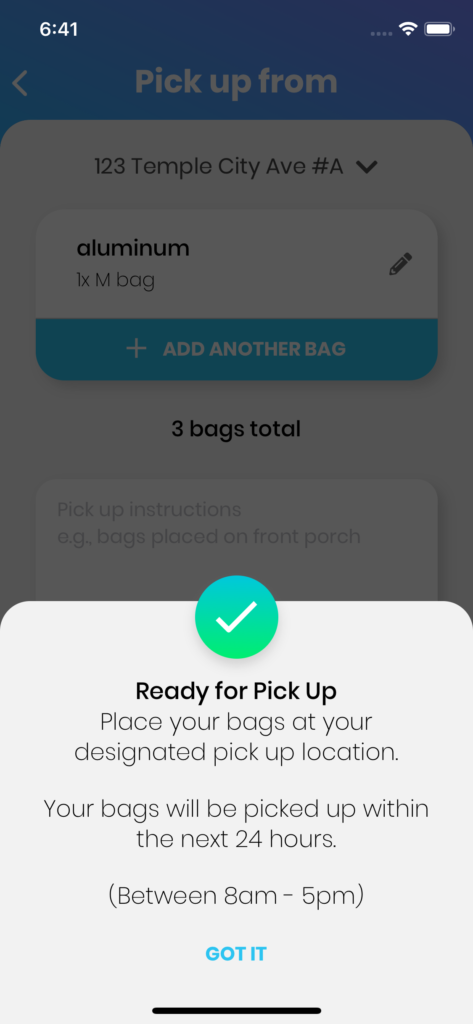
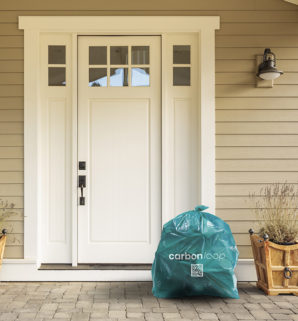
We built this flow to resemble something our users might already be familiar with, ordering delivery. Similarly to comparable apps like DoorDash or Uber Eats, we have a menu and checkout process.
Tracking was also being developed to help our users stay up-to-date about the process of their recyclables. After our drivers picked up the recyclables, it would be inputted into our system so that we could provide the users some visibility to stay informed about where it’s going.
Being Agile, Being Iterative
In an agile environment, we were able to learn and iterate quickly as we continued to develop our ideas. With our working prototype, we were able to conduct several rounds of moderated and unmoderated testing and take the feedback and further iterate on our initial designs.
Moderated testing allowed us to discover more about the experiences our users had with our app as well as their own previous experiences recycling. We learned about
Future Features and Further Considerations
From our moderated testing and further research, we came up with some other ways our users could use our platform.
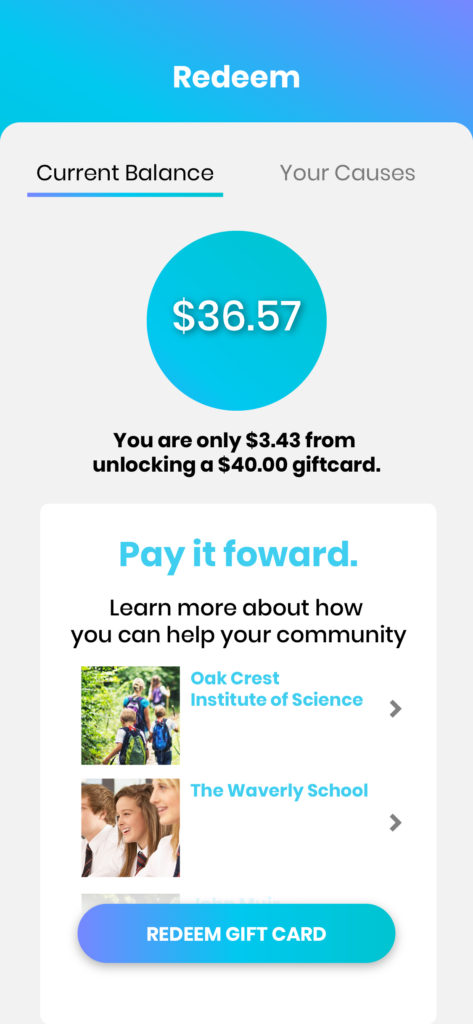
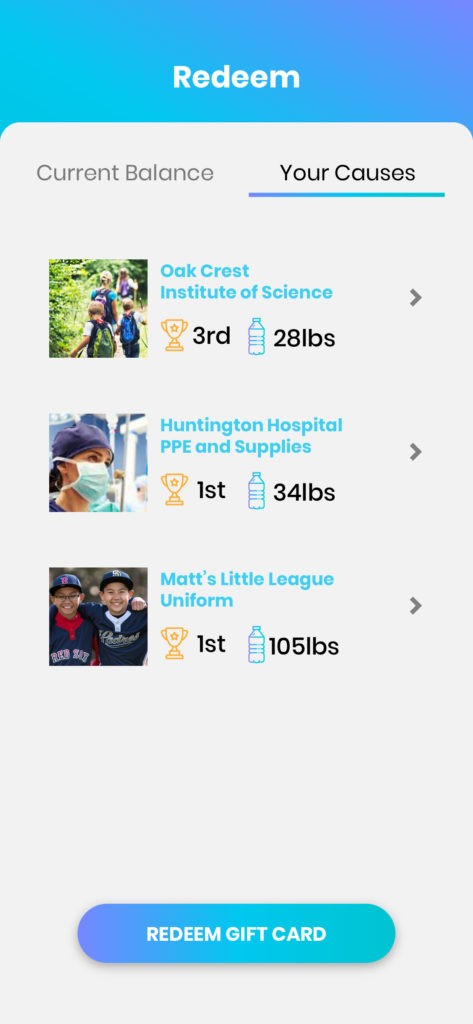
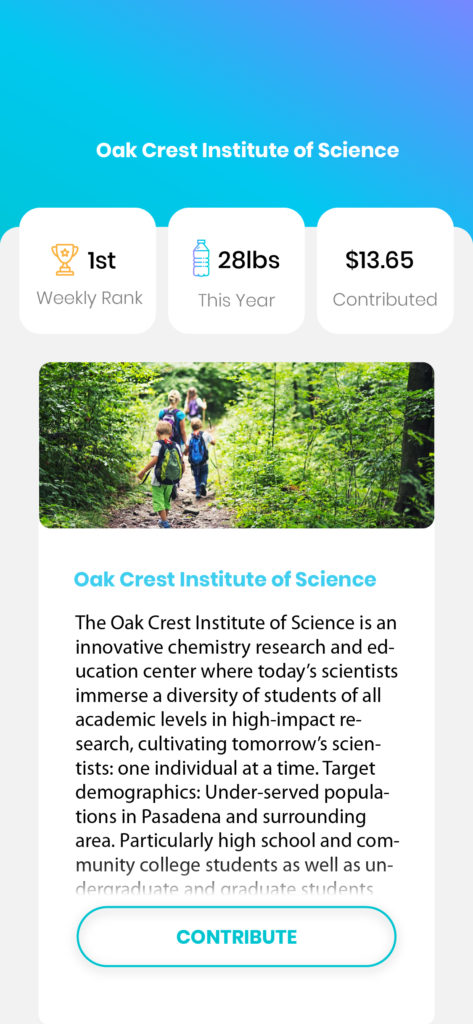

Pay it forward
We considered how we could partner with local charities and school programs to so our users could use our platform help our their immediate community as well, not just planet.
Instead of claiming their refunds for themselves, they could automate the proceeds toward another cause.
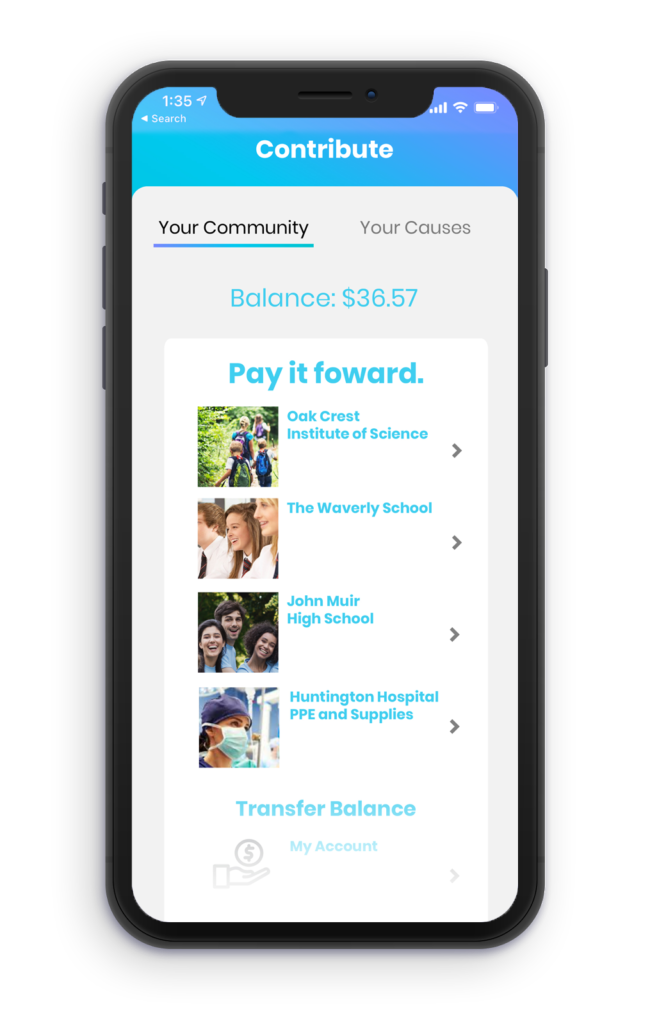
More accessible instructions
To make sure our users were able to feel confident and properly recycle, we shot some concept videos to demonstrate the appropriate steps to recycle. In addition to the video, we considered implementing voice over audio as well as captioning.
This was in efforts to assure high quality recyclables being put through our system and assure our users that they are recycling accordingly.
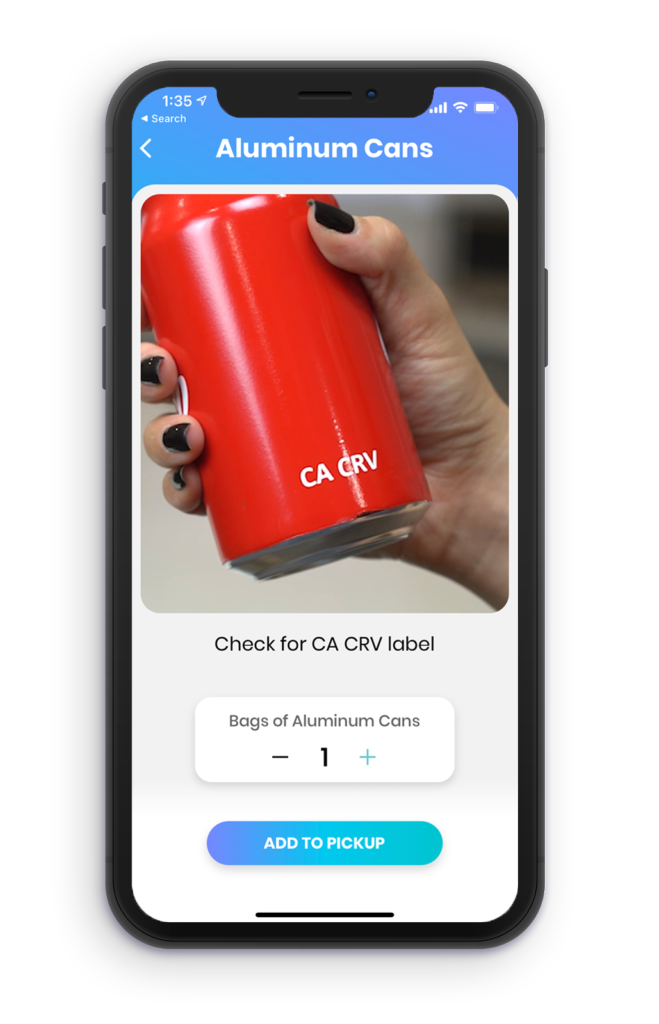
Extended services
As part of our efforts to serve our users, we considered extending our services to pick up cardboard as well.
Because of eCommerce, the most popular materials residences recycled was actually cardboard. We didn’t want to let this go un-addressed, so we developed ideas to accommodate this need.
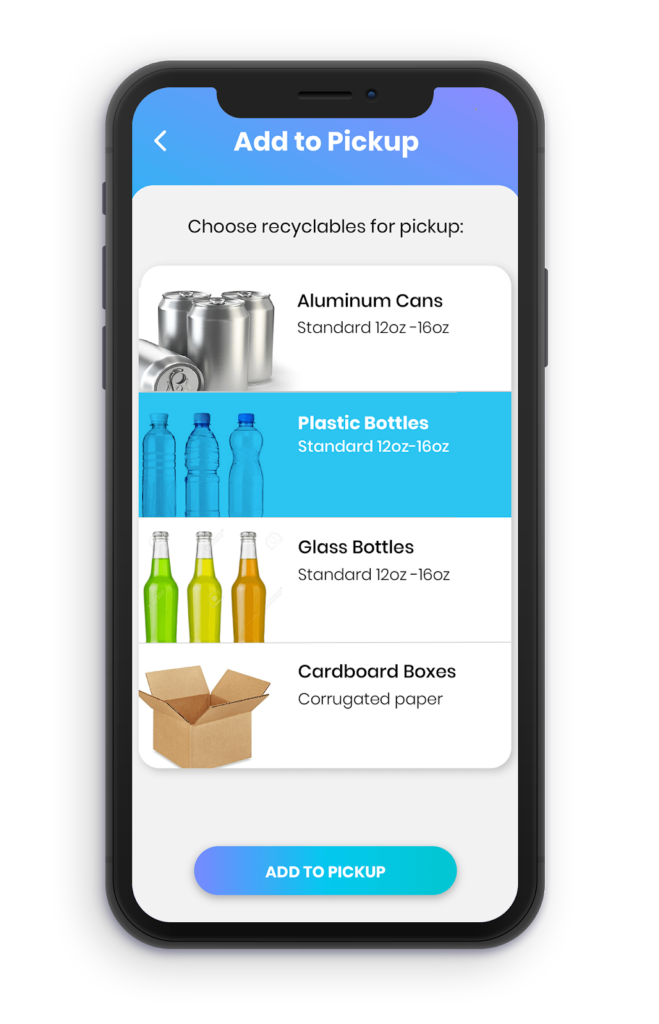
Outcome
CarbonLoop resulted in a validated product concept with a defined go-to-market path. While it hasn’t been scaled into a full production app yet, we successfully launched a localized MVP in the San Gabriel Valley, gathered real user insights, and validated core assumptions around demand, usability, and community engagement.
Through iterative testing and direct community feedback, we confirmed that users were not only frustrated with existing recycling processes, but also motivated by convenience, clarity, and visible impact. These learnings helped shape a realistic GTM strategy and a roadmap for future partnerships with local organizations and municipalities.
Conclusion
Being one of the founding members of this product allowed me to think holistically about how my skills as a product designer could shape the future of this product.
During this project, I got to work very closely with developers and engineers to figure out how these solutions would be created. It was thrilling to see these ideas come to life as we learned more and more about how we could contribute to creating a better planet we can all live on.
